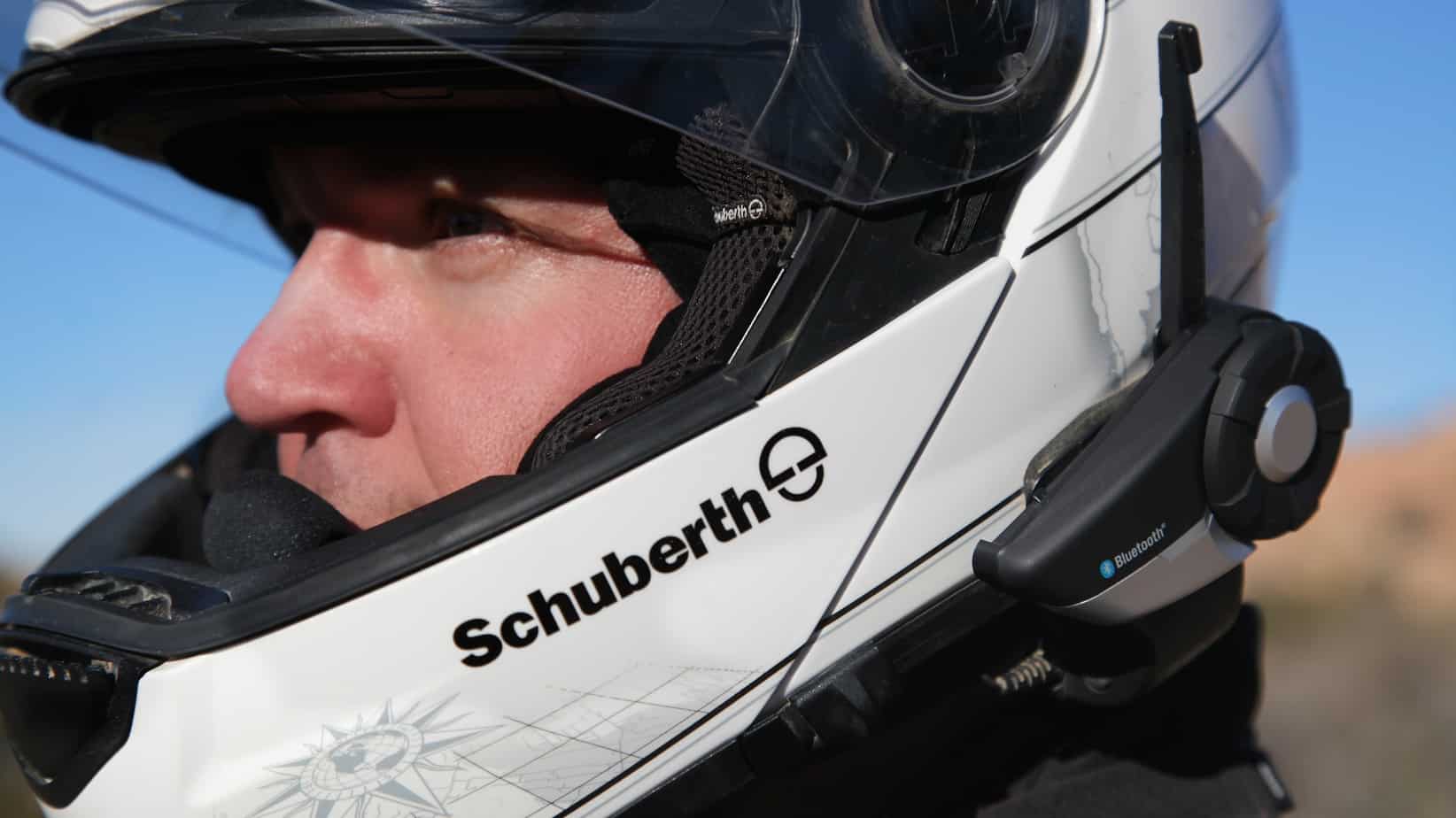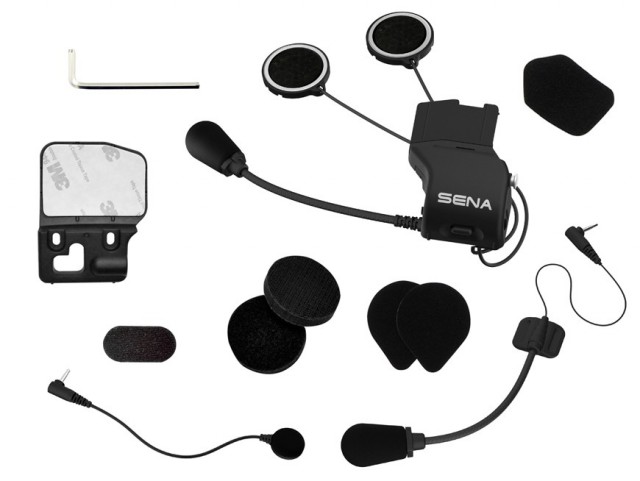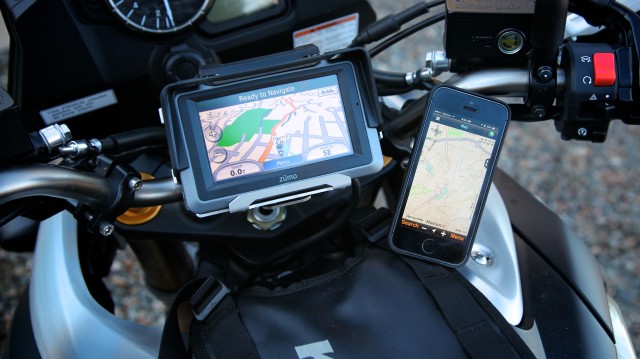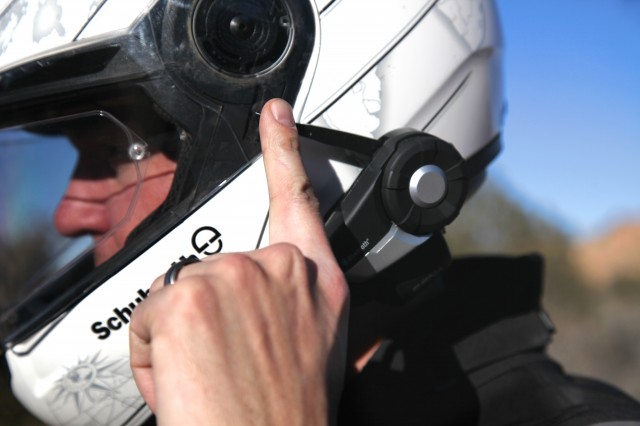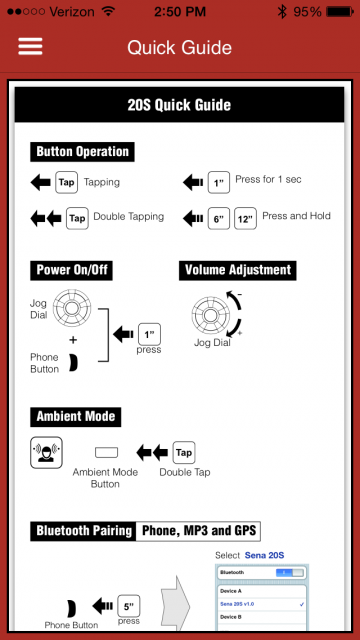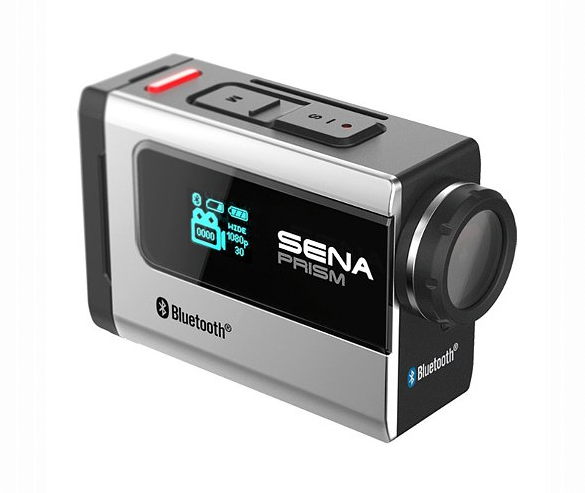It was nearly two years ago when I first reviewed Sena’s highly acclaimed SMH10 wireless helmet communicator, and at that time I would have been hard pressed to see how they could have made it any better. Not only have they done just that with their new Sena 20s model, by my humble estimation they have made it twice as good.
The first helmet communicator to employ Bluetooth 4.0 technology with dual Bluetooth modules, the Sena 20s is able to multitask better than any of its peer products, something that is increasingly important as our digital accessories multiply. It’s almost a little intimidating to comprehend, but the 20s can be paired to multiple devices to listen to music, take or initiate phone calls, hear navigational prompts from GPS devices, and still communicate wirelessly with up to nine other riders, within a 1.5 mile range. That’s a lot to ask on any device, but the 20s manages to pull it off quite nicely.
What’s in the box?
For our long-term test, we opted for the 20s Dual Pack which includes two communicators and all of the accessories needed to mount the units to two helmets. The comprehensive kit includes clamps and adhesive mounts for the units themselves, as well as three different microphones per unit. For my modular helmet, I installed the system with the wired boom microphone. For my dual sport helmet, I went with the smaller microphone which I attached to the inside of the helmet with the provided velcro pads. The system also comes with two 12v charging cables, two USB/Micro USB charging cable with 110v wall plugs, and two 2.3mm to 3.5mm audio cables so users can plug their audio devices directly into the 20s units. It’s a lot of stuff packed into one little box and should leave all users with nothing to want.
Installation and user interface
Installation of the 20s base mount, speakers, microphones and main unit, was straight forward and required but a few minutes per helmet. Pairing my various devices, and learning how to use this complex system, well, that took some time. It has been several months since first plucking the units from the box and I must admit, I still refer to the instructions regularly, not that I feel that is a negative. On the upshot, the instructions are very helpful and succinct.
What made the SMH10 such a great device was the thoughtfulness of the user interface, namely the large jog dial. Sena retained that feature for the 20s, but made the dial even easier to use with more defined edges and an enhanced tactile feel when rotated or pushed. The only other prominent button is on the back of the device which is used to manually accept or terminate phone calls, turn on the FM radio, and other specific features. The most ingenious button isn’t a button at all. To access some functions, the user simply taps the side of the unit. Or, in what seems like an ode to science fiction, you can access the various functions with voice commands, a process initiated by saying, “Hello, Sena.”
Once familiarized with the controls, I had to assemble my various devices and begin the process of pairing them to the Sena 20s. Bluetooth pairing used to be a hair pulling exercise but not so with these advanced units. To pair two Sena 20s units together, you initiate the pairing process and then…shake them. That’s right, you simply shake the devices simultaneously and they find themselves. It’s pretty slick.
There is one other button under the base of the mounting plate that I find particularly nice to have. Pressing that button silences all audible inputs save for the ambient sounds channeled through an exterior microphone.
Pairing to my Garmin Zumo GPS unit and iPhone 6 was just as easy and within a few minutes I was able to hear navigational prompts, listen to my favorite jams, and take calls complete wit caller ID displayed on my full color Zumo display. I’ll be the first to admit, it seemed like overkill, but having those features available on long stretches of slab has been beyond convenient.
My 20s unit is paired to my GPS and phone so I can receive navigational prompts and still have full access to my phone’s features.
Audio performance
One of my nitpicks with most helmet communicators is the feeble performance of the speakers. Often the volume is insufficient, the audio quality sub par, or both. The Sena 20s speakers are more than powerful enough to deliver booming sound and the clarity is superb. I have never encountered any odd feedback and adjusting the volume via the large jog dial is quick and easy with no searching for tiny buttons. To achieve their superior clarity, the system uses advanced noise canceling for HD quality sound.
Intercom effectiveness
Although I’ve only had a need to connect three riders, one of which was a pillion sitting inches away, I’ve found the intercom to be one of the best I’ve used. I also use Schuberth’s Cardo-based system, and I’m continually vexed by the lack of microphone sensitivity, especially when engaging the system. The Sena 20s immediately picks up on my voice, avoiding those chopped off sentences that can be so frustration. In testing the range of our pair of 20s units, one mile seemed more than close enough to always keep the conversation joined. In our mountainous region, pushing beyond one mile had the signal frequently dropped, but that’s hardly worth the complaint. One mile is more than enough for most groups. Unlike other units, the Sena 20s can be paired to other brand’s communication systems for maximum utility.
FM Radio
I’m not an avid FM radio listener, but the Sena 20s held a good signal, was relatively easy to tune with presets, although that’s not easily done on the move. Accessing the Radio functions is a simple process, especially with the voice commands.
The Sena Phone App
To make setup and pairing as easy as possible, Sena created a very useful phone application that I have found to be indispensable. It makes maximizing the 20s to its fullest with little effort. The app includes a user guide as well, and given the complexity of the 20s, has been a helpful aid.
Other bells and whistles and numbers
Sena went one step further than any other helmet communicator when they made the 20s unit compatible with their own Sena Prism 1080p HD action camera. Using voice prompts, riders can control their Prism camera for true hands-free recording.
Battery and charging performance is excellent with stand-time averaging around 8 days, although Sena claims 10. Both are impressive digits. Talk time is listed at 13 hours and charging from dead to full takes no more than 2.5 hours. I’ve been able to use the 12v charging plug connected directly to the unit for longer rides without feeling like I have a leash.
The basic tests and conclusion
For me, there are a few performance basics that every helmet communicator must fulfill. First, it has to be easy to turn on, off, and pair to my commonly carried devices. It has to hold a charge well, accept a charge quickly, and above all, the sound has to be better than average. The Sena 20s has delivered well beyond those base expectations and has become my favorite helmet communicator ever. The intercom functions are easy to use, the clarity of those communications is crisp, and all things considered, I can’t see how they could have made the units any better.


